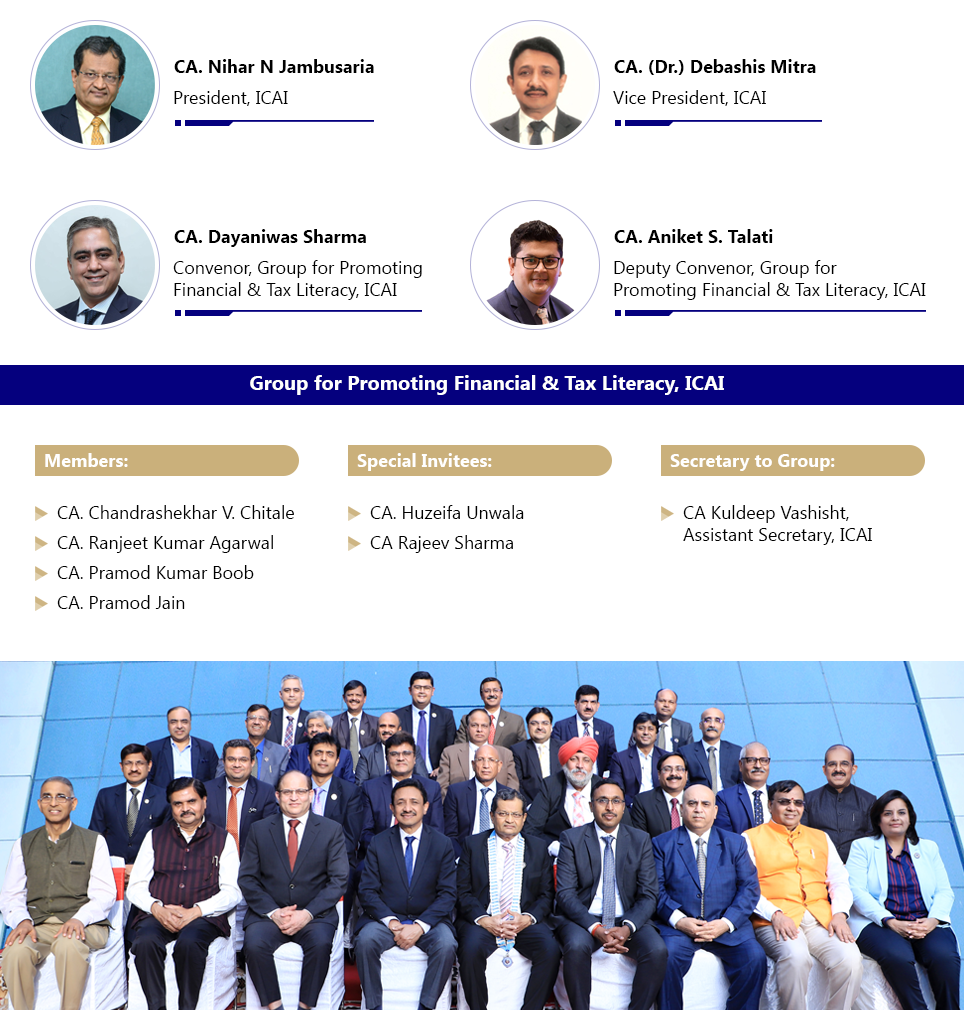1. What is GST?
- GST means Goods and Services Tax.
- It is dual structure-based tax levied by both Union and State Government.
- It has been introduced to curb the various limitations present in earlier indirect tax regimes.
- The taxable event under GST is ‘supply’ of goods or services or both.
2. What are the different types GST?
- CGST : Levied by Central Government on intra-State supplies through CGST Act, 2017.
- SGST : Levied by State Governments / Union Territories with Legislatures on intra-State supplies through SGST Acts, 2017.
- UTGST : Levied by Union Territories without Legislatures on intra-State supplies through UTGST Act, 2017.
- IGST : Levied by Central Government on inter-State supplies through IGST Act, 2017.
- Compensation Cess : Levied by Central Government on certain specific supplies through GST (Compensation to States) Act, 2017.
3. What are ‘Goods’ under GST?
GST is a single tax levied on both ‘Goods’ or ‘Services’ unlike the earlier tax regimes where there were separate taxes for goods and services.
It shall also include.
- Actionable claim.
- Growing crops, grass and things attached to or forming part of the land which are agreed to be severed before supply or under a contract of supply.
- Intangibles like duty credit scrips, copyright and carbon credit shall also be covered under ‘Goods’.
It does not include.
- Money and securities.
- Alcoholic liquor for human consumption.
4. What are the ‘services’ under GST?
- Any transfer of title in goods is considered as supply of goods. Any transfer of right in goods or an undivided share in goods without the transfer of title is treated as supply of services.
- Any lease, tenancy, easement, license to occupy land shall be a supply of service. Further, any lease or letting out of the building shall also be a supply of service.
- Any treatment of process which is applied to another person’s goods i.e., job work shall be a supply of service.
Following shall be treated as supply of services:
- Renting of immovable property.
- Construction including additions, alterations, replacements or remodelling of any existing civil structure, complex or a building intended for sale to a buyer except where the entire consideration has been received after the issuance of completion certificate, where required, by the competent authority or after its first occupation, whichever is earlier.
- Temporary transfer or permitting the use or enjoyment of any intellectual property right.
- Development, design, programming, customization, adaptation, upgradation, enhancement, implementation of information technology software.
- Agreeing to the obligation to refrain from an act, or to tolerate an act or a situation, or to do an act.
- Transfer of the right to use any goods for any purpose (whether or not for a specified period) for cash, deferred payment or other valuable consideration.
5. What are the advantages of GST?
- Mitigation of Cascading Effect
- Uncomplicated Compliances
- Boost to Make in India
- Regularization of unorganized sector
- Tackles corruption
- Easy Operations for E- Commerce
- Composition Scheme
- Technology Driven
6. What is CGST?
- CGST means Central Goods and Services Tax.
- It is applicable on intra-state supplies i.e., supplies made within a State.
- It is leviable in all States and Union Territories on intra-State supplies.
- The revenue of CGST goes to Central Government.
7. What is the maximum rate prescribed under CGST Act 2017?
- Presently, the different CGST rates notified are 0, 2.5%, 6%, 9%, 14%.
- As per the CGST Act, 2017, maximum rate of CGST cannot exceed 20%.
- The applicable rate of CGST is notified by the Central Government on the recommendations of the GST Council.
8. What is SGST?
- SGST means State Goods and Services Tax.
- It is applicable on intra-State supplies i.e., supplies made within the State.
- It is leviable within the respective State only.
- The revenue of SGST goes to respective State Governments.
9. What is the maximum rate prescribed under SGST Act 2017?
- Presently, the different SGST rates notified are 0, 2.5%, 6%, 9% and 14%.
- However, the maximum rate of SGST cannot exceed 20%.
- The applicable rate of SGST is notified by the respective State Government on the recommendations of the GST Council
10. What is IGST?
- IGST means Integrated Goods and Services Tax.
- It is applicable on inter-state supplies.
- It is applicable across all States and Union Territories of India.
- IGST is collected by the Central Government.
11. What is the maximum rate prescribed under IGST Act 2017?
- Presently, the different IGST rates notified are 0, 5%, 12%, 18% and 28% levied on all taxable inter-state supplies.
- However, the maximum rate of IGST cannot exceed 40% i.e., sum total of CGST and SGST/ UTGST.
- The applicable rate of IGST is notified by the Central Government on the recommendations of the GST Council.
12. What are Composite Supplies under ‘GST’?
The following composite supplies shall be treated as a supply of services:
- Works contract
- Supply, by way of or as part of any service or in any other manner whatsoever, of goods, being food or any other article for human consumption or any drink (other than alcoholic liquor for human consumption), where such supply or service is for cash, deferred payment or other valuable consideration.
13. Are Petroleum products liable to GST?
Following five petroleum products, even though satisfy the definition of ‘Goods’, GST shall be levied on them from a date to be notified:
- Petroleum Crude
- High Speed Diesel
- Motor Spirit or Petrol
- Natural Gas
- Aviation Turbine Fuel
14. What is HSN Code and SAC Code?
The HSN code also known as the Harmonized System Nomenclature code is a commodity description code that is internationally adopted and recognized commodity description and coding system. It is developed by the World Customs Organization.
With the introduction of GST in India, the HSN is now being used as a 3-tiered system. Businesses having a turnover below prescribed limit do not need to provide HSN while others need 2-digit HSN codes 4-digit HSN codes or 8-digit HSN codes depending on the amount of turnover.

